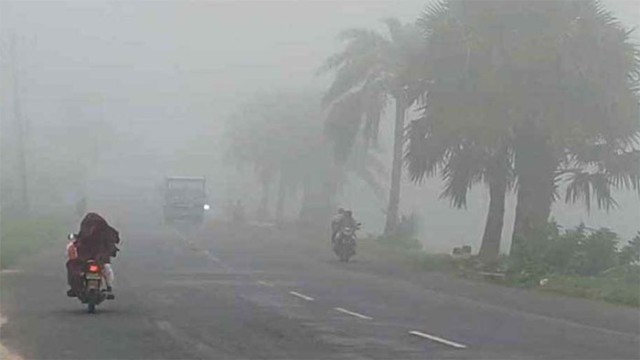Dhaka, Dec 17, (V7N) - On the evening of December 16, a 4.0 magnitude earthquake was felt in the northern region of Bangladesh. The epicenter of the tremor was located approximately 12 kilometers away from Meghalaya, India, which caused shaking in neighboring India as well. The earthquake struck at 8:10 PM and lasted for a brief moment, with no immediate reports of damage or casualties.
The Bangladesh Meteorological Department confirmed that the earthquake originated 208 kilometers away from the Earthquake Observation and Research Center in Dhaka. The tremor caused mild shaking in the affected areas, but the situation did not escalate into a major crisis. It was also reported that there were no significant structural damages or injuries at the time of the earthquake, but local authorities are still monitoring the situation closely.
According to seismologists, earthquakes are not an uncommon occurrence in this region, as Bangladesh is located near the boundary of the Indian and Eurasian tectonic plates. This particular earthquake, with a magnitude of 4.0 on the Richter scale, is considered a moderate tremor, which is typically felt in the affected areas but does not cause severe damage unless accompanied by a higher magnitude or shallower depth.
Previously, on November 26, another earthquake with a magnitude of 5.8 on the Richter scale was recorded in various parts of Bangladesh, including the capital Dhaka. The epicenter of that earthquake was located approximately 175 kilometers east of Chittagong, with a depth of 42 kilometers. That earthquake caused significant concern, but there were no major casualties or structural damages reported either.
According to experts, earthquakes of varying magnitudes have occurred in the region, and while they pose a risk, proper preparedness and response strategies can minimize their impact. Seismologists explain that the northern region of Bangladesh, along with parts of neighboring India, is situated in a seismically active zone, with regular activity along fault lines due to tectonic movements.
Dr. S. Alam, a prominent seismologist from the Bangladesh University of Engineering and Technology (BUET), shared his expert opinion on this earthquake and its possible implications. "The recent tremors are a reminder of the seismic risks that we face in this region. Although the earthquake was of moderate intensity, its frequency highlights the importance of continued monitoring and preparedness, especially in densely populated areas," Dr. Alam said.
In response to such incidents, the government of Bangladesh, along with disaster management authorities, has focused on improving the country’s earthquake preparedness and infrastructure resilience. Regular drills, awareness campaigns, and retrofitting of buildings are among the key strategies being implemented to mitigate the potential risks of future earthquakes.
While the latest tremor was relatively mild, experts continue to urge citizens and local authorities to remain vigilant and prepared for any potential seismic events, as the region remains at risk due to its location along major fault lines.
In conclusion, while the recent earthquake in Bangladesh was of moderate magnitude, it serves as a timely reminder of the country's vulnerability to seismic activity. Experts emphasize that continuous monitoring, preparedness, and public awareness are essential to reducing the impact of future tremors and ensuring the safety of the population in earthquake-prone regions.
END/SMA/RH/































Comment: